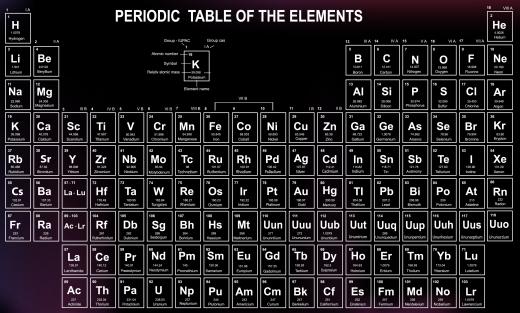What is a Mass Number?
The mass number of an atom specifies the numbers of particles in the nucleus. It is the sum of the number of protons and neutrons. In scientific writing, the mass number is usually located to the upper left of an atom’s symbol. When given together with the atomic number, or the number of protons, the mass number tells an atom’s element and isotope.
An atom consists of protons, neutrons and electrons. Both protons and neutrons are located in the nucleus of an atom and have masses roughly 1,800 times larger than the more mobile electrons. Protons and electrons have opposite electrical charges; for an atom to be electrically neutral, the number of protons must equal the number of electrons. Neutrons have no electrical charge.

The number of protons in an atomic nucleus determines which element the atom is. An atom with eight protons is an oxygen atom, for example. The number of neutrons in an atom, however, can vary somewhat and remain the same element; these varieties are called isotopes. An oxygen atom can contain eight, nine, or 10 neutrons and still be stable. Adding the number of protons and neutrons together gives the mass number.
A convention is commonly used for representing information about atoms in writing. An atom’s symbol on the periodic table indicates the atomic number. The mass number is located in the superscript position to the left of the atom symbol. A net electrical charge, if present, is written in the superscript position to the right. These three pieces of information reveal the total number of protons, neutrons and electrons, respectively.
The existence of different isotopes is the result of radioactive decay. One of the four fundamental forces of nature, the weak nuclear force, causes atoms to release energy without any contact with other matter. In alpha decay, two protons and two neutrons escape an atom entirely. In beta decay, a neutron can change into a proton. In this case, the mass number will stay the same, but the atomic number will increase by one.
It is important to distinguish mass number from atomic mass. The mass number is always an integer with no associated units. The atomic mass is a measurement of an atom’s mass and must have units of mass. While any unit for mass is valid, the most common unit used for atomic mass is the atomic mass unit. One atomic mass unit is equal to 1.66 x 10-24 grams.
AS FEATURED ON:
AS FEATURED ON:











Discussion Comments
@tolleranza - You are probably right - unfortunately your own enthusiasm does not always translate to excitement from students (but it does not hurt either).
I do not have a suggestion for mass numbers but a great way to wake kids up a bit can be with song. They actually have a period table of the elements song on YouTube (which of course begs the question - what don't they have on YouTube!)
Depending on budget constraints and what-not you could do some experiments involving the periodic table and those you can also find how-to's on the internet.
Maybe as a reinforcing reward, for the child that gets the best grade on the day's work, then maybe they can pick a YouTube or other online video to show the class.
Rewards for good behavior have changed a bit from getting to clean the board and go run errands for teachers hasn't it?
I am a huge science nerd (and this will just prove it) but I loved the mass numbers of atoms because of the order it gave to all of these completely different elements.
I mean how cool is it that with the change in a mass number of just 2 you go from Carbon (whose mass number is 6) to Oxygen (whose mass number is 8)? With two beyond tiny particles you can have two totally different elements!
Unfortunately I have not seen kids get this excited about mass numbers and the period table. Any suggestions on how to make it a little bit "cooler" or more fun?
Post your comments